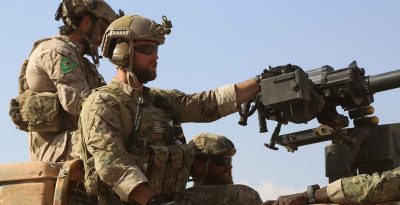The US Plan for “Rojava”. US Strategy for Military, Economic and Political Influence in Northern Syria

The Kurdish-led “Syrian Democratic Forces” recently announced that the US has a strategy for military, economic, and political influence in northern Syria for decades to come.
The US of course denied the implication that it was planning to occupy this strategically positioned territory, though one would do well to remember that it already has 10 bases there, according to Turkish sources who disclosed such information last month. It’s possible that some of the facilities aren’t intended to be permanent and are just temporary bases being used for tactical reasons, but it’s very unlikely that the US will voluntarily withdraw from every one of them. This isn’t mere speculation either, as SDF spokesman Talal Silo suggested that northern Syria could be an alternative to the US base in Turkey’s Incirlik. Bearing in mind how American arms and training have transformed the Kurdish-led SDF into a conventional standing army, and how considering this force is strategically wedged between Russia’s Syrian and Turkish partners, the argument can be made that the US has every self-interested reason to maintain its troop deployment and bases in this part of the Mideast, so it makes sense why there’s talk about a decades-long military, economic, and political strategy being formulated right now.
As the saying goes, “the best-laid plans of mice and men often go awry”, and so too could all of the US’ long-term strategic planning amount to nothing if it isn’t careful, particularly in terms of how it manages the de-facto formalization of a sub-state Kurdish-run entity in northern Syria. Turkey has already said that it would do anything to stop its emergence, and the latest reports that Ankara will launch joint anti-terrorist operations with Tehran against Kurdish militants in northern Iraq imply that it would also have Iran’s support in this initiative as well. Moreover, Syria is adamant about restoring Damascus’ legitimate authority all across the country, and President Assad already said that he doesn’t recognize the unilateral so-called “federalization” that the Kurds announced in spring 2016. For all intents and purposes, it appears as though a regional coalition is forming again the prospects of an American-backed Kurdish-led polity being carved out of northern Syria, with the many US troops and bases there being the only thing holding this bloc back from attacking in the coming future.
Taking into account that the US seems poised to forcibly protect its interests in “Rojava” and will respond militarily to any multilateral liberation campaign in the region, especially one which targets its troops and bases, then its planned decades-long occupation of northern Syria might already be a fait accompli so long as it can find a way to “legitimize” it. To that end, the US is using its military forces to freeze the status quo and preserve all Kurdish gains east of the Euphrates, after which it will back up its demands with brinksmanship if need be, with the precedent already being set of the US attacking the Syrian Arab Army (SAA) on several occasions. So long as it has the military and political willpower to prevent the Kurds from being dislodged from the region, and that’s a key qualifier especially in the face of Turkish threats, the US can then force the de-facto “formalization” of the on-the-ground political reality of northern Syria being run by a pro-American Kurdish-led “federation”, which is what it’s wanted for a couple of years already.
The post presented is the partial transcript of the CONTEXT COUNTDOWN radio program on Sputnik News, aired on Friday Aug 25, 2017:
Andrew Korybko is an American Moscow-based political analyst specializing in the relationship between the US strategy in Afro-Eurasia, China’s One Belt One global vision of New Silk Road connectivity, and Hybrid Warfare.
Featured image is from the author.

